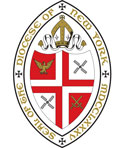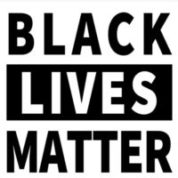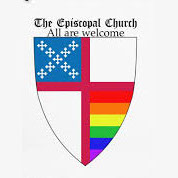The Third Sunday of Advent
Watch the Sermon Here
Isaiah 61:1-4, 8-11
1 Thessalonians 5:16-24
John 1:6-8, 19-28
As our beautiful Advent wreath predicts, today we begin the second half of this holy season of preparation, waiting and expectation
During Advent, we simultaneously look backward with thanks for the first coming of Christ as we anticipate the culmination of salvation history in Christ’s Second Coming
With spiritual agility, we live into what St. Paul coins as the already but not yet, a dynamic time in which we are called both to be on our toes and to relax into the splendor of God’s holiness
As our spiritual director for this season, we have none other than John the Baptist, who stands for Christians as the transitional figure with one foot in the Old and another in the New Testament witness
Who was this man, how did he relate to Jesus, and why should we care amid our busy lives 2000 years later?
The creators of our lectionary cycle think that John the Baptist is such a big deal that we devote both the Second and Third Advent Sundays to his witness each year
Now at St. Michael’s, we often miss this double dose because we have held our Pageant on 3 Advent, but this year we delayed the Pageant a week with a happy consequence that we get two lectionary depictions of John the Baptizer
All four gospels bear witness to the John the Baptist, and yet each tells his different story that we conflate at our peril
In Mark’s Gospel, the oldest version that we heard last Sunday, we find the edgiest and most apocalyptic embodiment of an eccentric man wearing itchy camel’s hair clothes and living ascetically on locusts and wild honey—just the guy you would invite to your Zoom holiday party
In Mark, John the Baptist also gets in your face and challenges sinners to repent, even as he baptizes Jesus
Later the Baptizer gets in over his head with Herodias’s daughter (later tradition called her Salome), whom John Stickney’s and my favorite painter Caravaggio later captured in all its bloody glory
As a sidebar, did you know that the most sought-after relic among the pious for centuries was John the Baptist’s head—you can spend hours online that you will never get back researching this wild backstory
Now Matthew follows a similar narrative to Mark but shortens the beheading scene and morphs John more into a prototype of Jesus than did Mark
Luke—and only Luke—tells us the beautiful story about the two future Moms, Elizabeth and Mary, now described as relatives, Elizabeth well past her fertility days after praying unceasingly for offspring and Mary as a quasi-clueless youth upon whom news is sprung without her agency, a story that includes with two embryonic boys who jump for joy, even if they never acknowledge their intimate connection later in life when they meet as men
In today’s passage from John (the other guy John), from a gospel written perhaps a generation after MK, John the Baptist receives a demotion of sorts but still plays the critical role of herald, the one sent by God to announce Jesus’s unique vocation
Today’s passage from John’s Gospel immediately follows the beautiful Prologue often read on Christmas Day: In the beginning was the Word, and the Word was with God, and the Word was God.
In several ways, this Fourth Gospel clarifies diminutively that John the Baptist is not the messiah, is not the prophet, is not competing with Jesus
While this John the Baptist admonishes us to make straight the way of the Lord in the spirit of Isaiah, this version comes off more as Mr. Rogers than crazy man with his hair on fire that we find in Mark
This version implies that John baptizes Jesus but never explicitly states it
While taking a more diminutive role than MK or MT, this gospel later declares that it is John himself who testifies to seeing “the Spirit come down from heaven like a dove and rest on him”
John announces that Jesus is the one “who baptizes with the Holy Spirit” and John even proclaims a “belief that he is the Son of God”
In other words, John serves as the herald, the testifier, and the perfect role model for you and me as witnesses to Christ’s presence in the world
If you view yourself as eccentric and with hair on fire, read Mark for inspiration, but if you lean toward Mr. Rogers in getting through the day, go with the Fourth Gospel that we hear this morning
By coincidence in our Rehearing Heaven and Hell class this morning, we explored the unique witness of this Fourth Gospel—written by the other John a generation after MK or MT—to better understand how it envisions God’s goal for all creation
Without question, the Fourth Gospel makes the most audacious claim for Christ’s divinity—again, the Prologue announces that Christ existed at the Big Bang—also noting Jesus’s dual role as savior and judge in a nuanced balancing act
In this gospel, we encounter God only through the Son, where Jesus serves as God’s agent to give humanity a choice between salvation and judgment (choose wisely)
Materially more than the earlier three, this Fourth Gospel walks back the imminent return of Christ that we highlight in Advent but testifies that salvation in fact begins with eternal life right here and now for those who choose to be in Christ
Eternal life represents the prize of salvation that is offered by God through Christ and accepted by the individual in faith
Eternal life is immediately available and need not wait for death or last judgment, since we find it in our current encounter with Christ
More than MK, MT or LK, this gospel embraces sharp dichotomies: light/dark; spirit/flesh; truth/falsehood; eternal life and judgment; above/below; heaven/earth; true believers/fallen world: John’s readers must choose and decide critical ethical choices, which is why we include a penitential flavor to this season of watching and waiting
In this spirit, we spread the light of Christ’s continuing presence in the world, piercing the darkness with actions like the passage of the Thirteenth Amendment to the Constitution 155 years ago this week, which abolished chattel slavery in America, even as we acknowledge with contrition that our own Diocese of New York refused to condemn slavery during the Civil War
Although most of us have lived through many Advent seasons, it becomes a firm grasp of the obvious to declare 2020 as unique among the cycles
Come January, we’ll look back with 20/20 hindsight on a year from hell while simultaneously embracing our Christian identity as people of hope
In this crazy and disorienting year, we people of St. Michael’s have attempted to keep the faith in our service to those with food insecurity, to a nation verging on psychosis in its electoral politics, to a culture repeatedly wracked by the scars of white entitlement and racial violence, even as we explore our own complicity in the structural sins of this world
Yes, we all know that the normal rituals of the coming holiday will make sacrificial pullback for the sake of safety
Perhaps we can find the silver lining in our slow-walking of merriment by spending extra time in solitude, time with those we love the most (even if necessarily via Zoom), or time in prayerful thanks that the Savior is born into this broken world to proclaim justice, promote reconciliation, and save us from ourselves
In the spirit of today’s Gospel, I invite you to embrace your inner John the Baptist to re-envision a world in which we make straight the way of the Lord, in which we cry out more boldly in the urban wilderness for justice and reconciliation, in which we metabolize the vulnerability of the newborn Christ and the bravery of one who reigns from the Cross on our behalf
With today’s lesson in hand and as we move toward the darkest week of the year—meteorologically speaking—today serves as the perfect time for lighting an evening candle to still our hearts and symbolize our hope
In this Johannine spirit, let’s embrace the reality that we are not the light but that we do come to bear witness to the light
Light a candle this evening, and ponder quietly these words from John’s Gospel that immediately precede today’s story: “What has come into being in Christ was life, and the life was the light of all people. The light shines in the darkness, and the darkness did not overcome it.”




